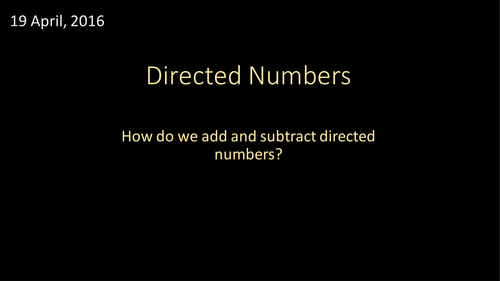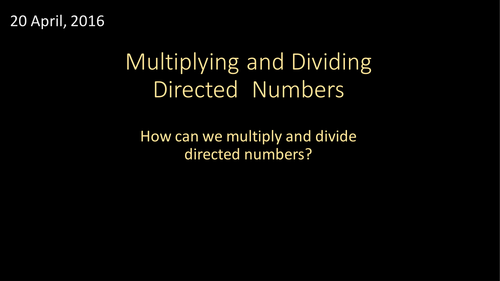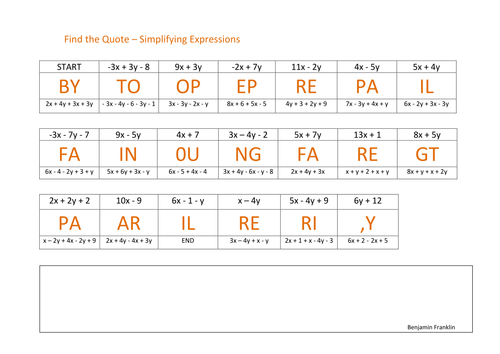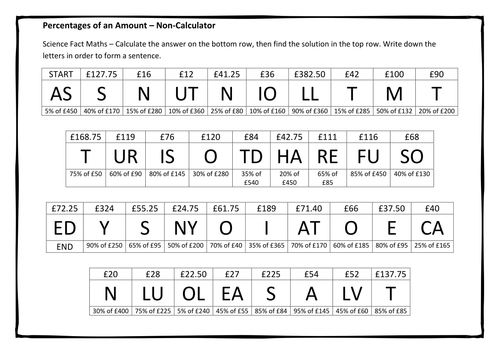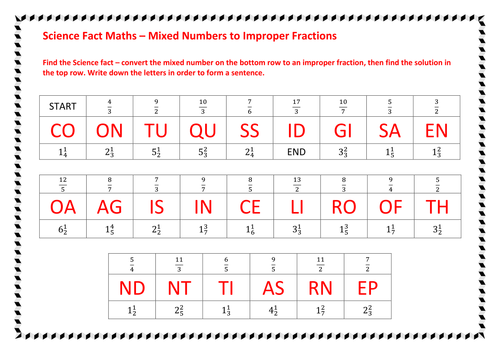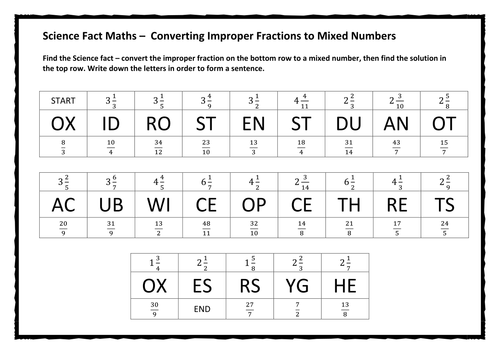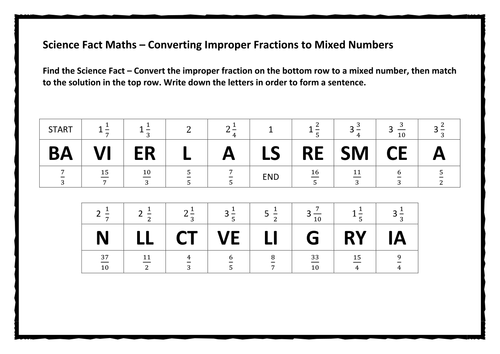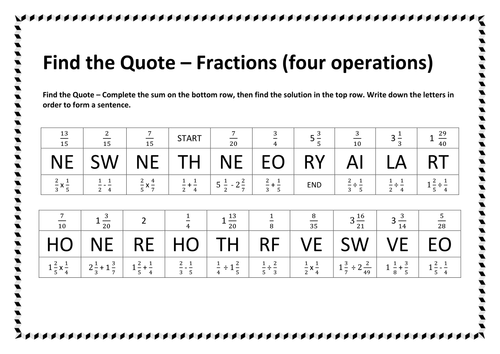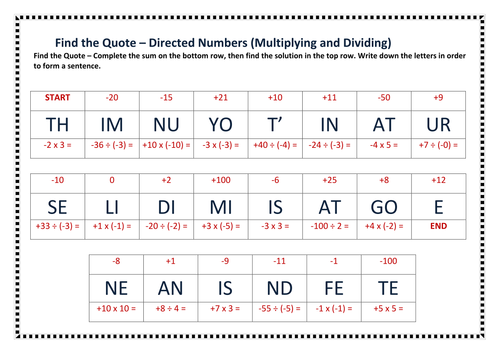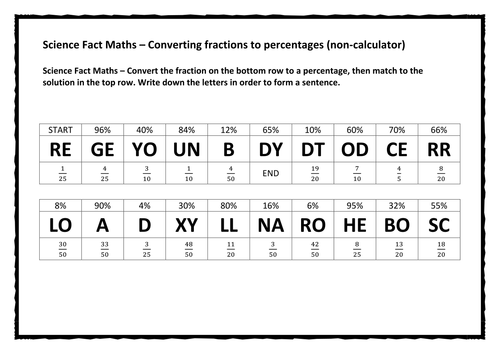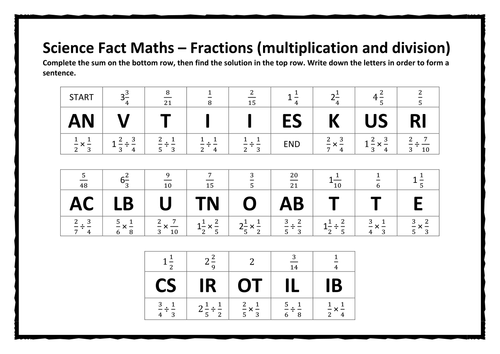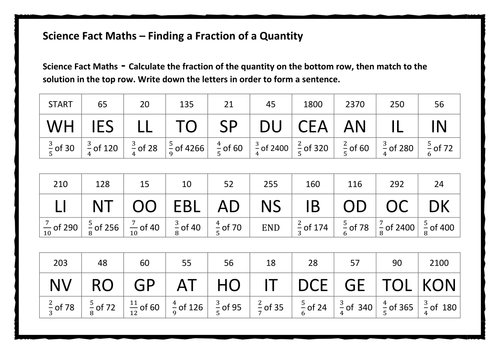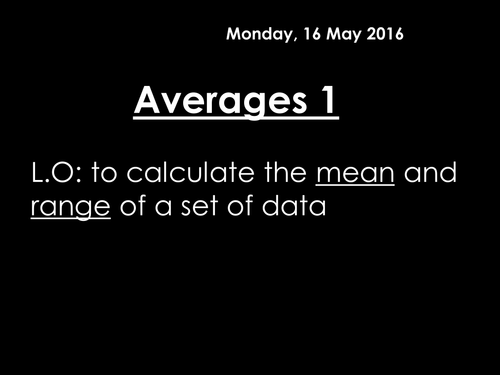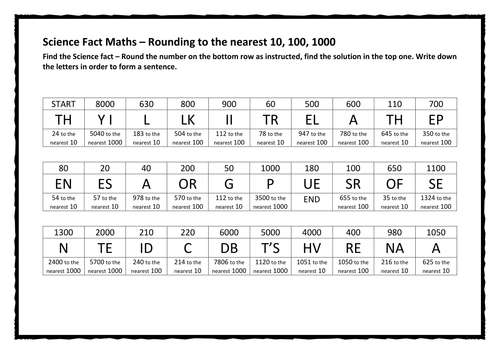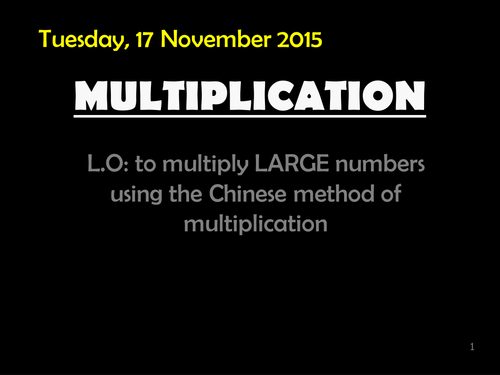
55Uploads
79k+Views
37k+Downloads
All resources

Adding and Subtracting Directed Numbers (including functional questions)
A PowerPoint slide show with step by step animated examples of how to add and subtract directed numbers. The slides include an algorithm to model the method that pupils can copy. Then questions, with answers that appear on clicks. Then functional, exam type questions (with answers), to further deepen understanding. Suitable for specialist and non-specialist Maths teachers. No password protection, so you can customise it at will!

Multiplying and Dividing Directed Numbers (including functional questions)
A PowerPoint slide show with step by step animated examples of how to multiply and divide directed numbers. The slides include an algorithm to model the method that pupils can copy. Then questions, with answers that appear on clicks. Then a functional, exam type question (with answers), to further deepen understanding. Suitable for specialist and non-specialist Maths teachers. No password protection, so you can customise it at will!

Find the Quote Algebra - Simplifying Expressions
Find the quote – simplify the expression on the bottom row, match it to the answer in the top one. Write down the letters in order to form a sentence.

Science Fact Maths – Percentages of an Amount - Non-Calculator
Find the Science fact – solve the percentage problem on the bottom row, find the solution in the top one. Write down the letters in order to form a sentence.

Science Fact Maths – Mixed Numbers to Improper Fractions
Find the Science fact – convert the mixed number on the bottom row to an improper fraction, then find the solution in the top row. Write down the letters in order to form a sentence.

Science Fact Maths – Converting Improper Fractions to Mixed Numbers 1
Find the Science fact – convert the improper fraction on the bottom row to a mixed number, then find the solution in the top row. Write down the letters in order to form a sentence.

Science Fact Maths – Converting Improper Fractions to Mixed Numbers 2
Find the Science fact – convert the improper fraction on the bottom row to a mixed number, then find the solution in the top row. Write down the letters in order to form a sentence.

Find the Quote Number - Fractions - Four Operations
Find the Quote – Complete the sum on the bottom row, then find the solution in the top row. Write down the letters in order to form a sentence.

Find the Quote – Directed Numbers (Multiplying and Dividing)
Find the Quote – Complete the sum on the bottom row, then find the solution in the top row. Write down the letters in order to form a sentence.

Science Fact Maths – Converting fractions to percentages (non-calculator)
Science Fact Maths – Convert the fraction on the bottom row to a percentage, then match to the solution in the top row. Write down the letters in order to form a sentence.

Science Fact Maths – Fractions (multiplication and division)
Complete the sum on the bottom row, then find the solution in the top row. Write down the letters in order to form a sentence.

Science Fact Maths – Finding a Fraction of a Quantity - Hardest
Science Fact Maths - Calculate the fraction of the quantity on the bottom row, then match to the solution in the top row. Write down the letters in order to form a sentence.

Calculating Averages and Range (with questions and answers)
Three PowerPoint slide shows with step by step animated examples of how calculate averages and range. The slides include an algorithm to model the method that pupils can copy. Then questions, with answers that appear on clicks. Suitable for specialist and non-specialist Maths teachers. No password protection, so you can customise it at will!

Science Fact Maths – Rounding to the nearest 10, 100, 1000
Find the Science fact – Round the number on the bottom row as instructed, find the solution in the top one. Write down the letters in order to form a sentence. Solution Included

Multiplication - the Chinese Method
A PowerPoint slide show with animated examples of how to solve problems using the Chinese method of multiplication, that pupils can use as algorithms if required. Then ten questions, progressively more challenging, including decimals, with answers that appear on clicks. This is a great method of multiplication that gives pupils a powerful tool to use in many mathematical situations. No password protection, so you can customise it at will!

